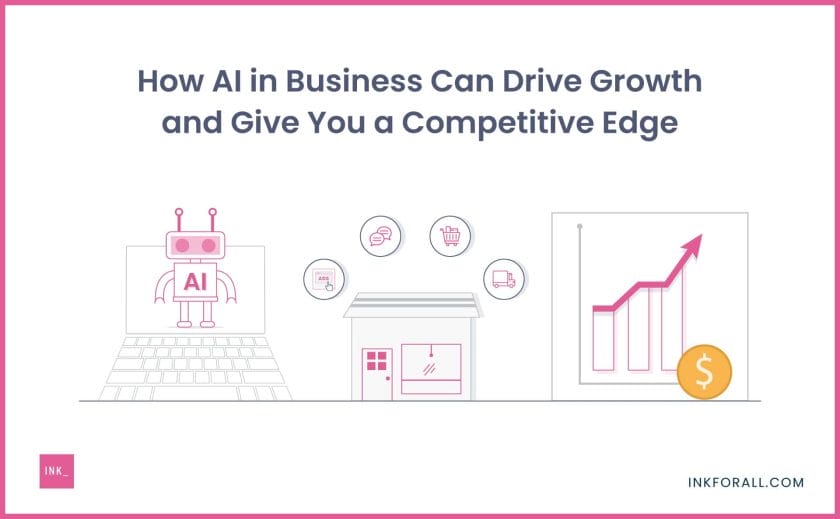Artificial intelligence (AI) has become a buzzword in recent years, but what are the main tools that make it possible? In this article, we will explore some of the key technologies and techniques that power AI, from machine learning to natural language processing.
What is AI and How Does it Work?
As an AI expert, I get asked this question a lot. At its core, artificial intelligence refers to the development of machines that can perform tasks that would typically require human intelligence to complete. This includes things like learning, problem-solving, and decision-making.
AI works by using algorithms and statistical models to analyze data and identify patterns. The more data an AI system has access to, the better it can perform its tasks. Machine learning is a subset of AI that allows systems to learn from experience without being explicitly programmed.
There are three main types of machine learning: supervised learning, unsupervised learning, and reinforcement learning. Supervised learning involves training an algorithm on labeled data so that it can make predictions on new, unlabeled data. Unsupervised learning involves finding patterns in data without any predefined labels. Reinforcement learning involves training an algorithm through trial-and-error feedback.
Machine Learning vs Traditional Programming Techniques: What’s the Difference?
Traditional programming techniques involve writing code that follows a set of rules or instructions to accomplish a specific task. In contrast, machine learning algorithms learn from experience and adjust their behavior based on the input they receive.
One of the key differences between traditional programming and machine learning is the need for large amounts of data in order for machine learning algorithms to be effective. Traditional programming may only require a small amount of input data to produce accurate results, while machine learning requires vast amounts of data in order to train its models effectively.
Another difference is the level of control over the output. With traditional programming techniques, developers have complete control over what the program does and how it behaves. With machine learning algorithms, however, there is always some degree of uncertainty about how the algorithm will behave in certain situations.
Main Tools Used in AI Development
There are many different tools used in AI development depending on the specific task at hand. Some of the most common tools include:
Programming Languages:
Python is one of the most popular programming languages used in AI development due to its simplicity and versatility. Other commonly used languages include Java, C++, and R.
Frameworks and Libraries:
Frameworks such as TensorFlow, PyTorch, and Keras provide pre-built tools for building and training machine learning models. Libraries such as NumPy and Pandas provide data analysis tools that are essential for AI development.
Data Visualization Tools:
Tools such as Tableau and Power BI allow developers to visualize large datasets in order to identify patterns and trends.
The Role of Neural Networks in AI
Neural networks are a type of machine learning algorithm that are modeled after the structure of the human brain. They consist of layers of interconnected nodes that process input data to produce output.
The key advantage of neural networks is their ability to learn from experience without being explicitly programmed. They can identify patterns in data that might not be immediately apparent to humans, allowing them to make more accurate predictions or decisions.
There are many different types of neural networks, including convolutional neural networks (used for image recognition), recurrent neural networks (used for natural language processing), and deep neural networks (used for complex tasks such as playing games or driving cars).
Popular Programming Languages for AI Development
As mentioned earlier, Python is one of the most popular programming languages used in AI development due to its simplicity and versatility. It has a wide range of libraries available for machine learning, data analysis, and visualization.
Java is another commonly used language in AI development due to its speed and scalability. It is often used in larger enterprise applications where performance is critical.
C++ is another popular language due to its speed and efficiency. It is often used in applications where real-time processing is required, such as in robotics or autonomous vehicles.
Natural Language Processing and Speech Recognition in AI
Natural language processing (NLP) and speech recognition are two areas of AI that have seen significant advancements in recent years. NLP involves teaching machines to understand and interpret human language, while speech recognition involves teaching machines to recognize spoken words.
One of the key challenges in NLP is understanding the nuances of human language, including idioms, sarcasm, and cultural references. This requires large amounts of training data and sophisticated algorithms that can identify patterns in language.
Speech recognition also presents its own set of challenges, including variations in accent and background noise. However, advances in deep learning algorithms have allowed for significant improvements in accuracy over the past few years.
Computer Vision and its Relation to AI
Computer vision is another area of AI that has seen significant advancements in recent years. It involves teaching machines to interpret visual information from images or video.
Some common applications of computer vision include facial recognition, object detection, and autonomous driving. Computer vision algorithms use deep learning techniques to identify patterns in visual data and make decisions based on what they see.
One of the key challenges in computer vision is dealing with variations in lighting conditions or environmental factors that can affect the accuracy of image recognition algorithms.
Using Data Analytics with AI to Improve Decision-Making Processes
Data analytics plays a critical role in AI development by providing insights into how machines are performing their tasks. By analyzing data generated by an AI system, developers can identify areas where improvements can be made or where additional training may be necessary.
One example of this is predictive maintenance for industrial equipment. By analyzing sensor data generated by machinery, developers can identify when maintenance is needed before a breakdown occurs. This can help reduce downtime and save companies money on repairs.
Another example is fraud detection for financial institutions. By analyzing transaction data, AI systems can identify patterns of fraudulent activity and alert banks to potential problems.
Ethical Considerations in Developing and Using AI Tools
As with any new technology, there are ethical considerations that must be taken into account when developing and using AI tools. One of the key concerns is the potential for bias in machine learning algorithms.
For example, if an algorithm is trained on a dataset that is not representative of the population as a whole, it may produce biased results. This could lead to discrimination or unfair treatment of certain groups.
Another concern is the potential for AI systems to replace human workers. While automation can help increase efficiency and reduce costs, it can also lead to job loss in certain industries.
It is important for developers and policymakers to consider these ethical issues when designing and implementing AI systems.
Improving AI Performance Over Time with Reinforcement Learning
Reinforcement learning involves training an algorithm through trial-and-error feedback. This allows the algorithm to learn from its mistakes and improve its performance over time.
One example of reinforcement learning in action is AlphaGo, a computer program developed by Google that was able to beat world champion human players at the game of Go. The program used reinforcement learning techniques to improve its gameplay over time.
Reinforcement learning has many applications beyond gaming, including robotics, autonomous driving, and industrial automation. It allows machines to adapt to changing environments and make better decisions based on their experiences.
The Concept of Deep Learning and its Applications in AI Development
Deep learning refers to a subset of machine learning algorithms that use neural networks with multiple layers. By adding more layers, deep learning algorithms are able to process more complex data and make more accurate predictions or decisions.
Some common applications of deep learning include image recognition, natural language processing, and speech recognition. Deep learning has allowed machines to perform tasks that were once thought to be impossible for computers, such as recognizing faces or translating languages in real-time.
How Robotics and Automation Technologies Rely on AI for Smarter Decision-Making Capabilities
Robotics and automation technologies rely heavily on AI for their decision-making capabilities. By using machine learning algorithms, robots can adapt to changing environments and make decisions based on sensor data.
One example of this is autonomous vehicles, which use a combination of sensors and machine learning algorithms to navigate roads and avoid obstacles. Another example is industrial automation, where robots are used to perform tasks that are too dangerous or repetitive for humans.
AI allows these machines to make decisions in real-time based on the data they receive, making them more efficient and effective than traditional automated systems.
The Limitations and Challenges of Using AI Tools in Real-World Scenarios
While AI has seen significant advancements in recent years, there are still many limitations and challenges associated with its use in real-world scenarios. One of the key challenges is the need for large amounts of training data in order to develop accurate models.
Another challenge is the potential for bias in machine learning algorithms. If an algorithm is trained on a biased dataset, it may produce biased results that could lead to discrimination or unfair treatment of certain groups.
There are also concerns around the ethical implications of using AI tools, particularly when it comes to job displacement or privacy concerns. It is important for developers and policymakers to consider these issues when designing and implementing AI systems.
Industries Leveraging the Power of AI Tools, such as Healthcare or Finance
AI has many applications across a wide range of industries. In healthcare, machine learning algorithms are being used to improve patient outcomes by analyzing medical records and identifying patterns that can help doctors make more accurate diagnoses.
In finance, AI tools are being used for fraud detection, risk management, and investment analysis. Machine learning algorithms can analyze large datasets to identify patterns that may not be immediately apparent to humans, allowing financial institutions to make more informed decisions.
Other industries that are leveraging the power of AI include manufacturing, retail, and transportation. As AI technology continues to advance, we can expect to see even more industries adopting these tools in the coming years.
Future Trends in Artificial Intelligence to Watch Out For
The field of artificial intelligence is constantly evolving, with new advancements being made all the time. Some future trends to watch out for include:
Explainable AI:
As machine learning algorithms become more complex, it becomes increasingly difficult for humans to understand how they are making their decisions. Explainable AI aims to address this issue by providing transparency into how these algorithms work.
Federated Learning:
Federated learning allows multiple devices or systems to collaborate on a machine learning task without sharing sensitive data. This could have significant implications for privacy and security in industries such as healthcare or finance.
Quantum Computing:
Quantum computing has the potential to revolutionize AI by allowing machines to process vast amounts of data at speeds that are currently impossible with traditional computers. While still in its early stages, quantum computing could have significant implications for fields such as drug discovery or climate modeling.
In conclusion, AI is a rapidly growing field with many tools available to help automate and streamline processes. Some of the main tools include machine learning algorithms, natural language processing, and computer vision. If you are interested in implementing AI technology into your business or organization, we encourage you to get in touch with us and check out our AI services. We would be happy to discuss how we can help you harness the power of AI for your specific needs.

What are the 4 major components of AI?
The building blocks of AI are Machine Learning, Natural Language Processing, Computer Vision, Robotics, and Expert Systems. These elements allow machines to acquire knowledge, comprehend language, see the world, and utilize advanced decision-making techniques, allowing them to interact with the environment in unprecedented ways.
What are the 3 main components of AI?
In order to comprehend more complex ideas like data mining, natural language processing, and autonomous driving software, it is important to have a grasp on the fundamental concepts of artificial intelligence, which include machine learning, deep learning, and neural networks.

What are the 5 components of AI?
The primary areas of focus for AI research include learning, reasoning, problem-solving, perception, and language usage, all of which are essential components of intelligence.
What are the top 3 technology direction of AI?
This article will discuss three main areas of artificial intelligence technology, namely speech recognition, computer vision, and natural language processing.
What are the original 7 aspects of AI?
The seven original aspects of AI, which were identified by McCarthy and colleagues at the Dartmouth Conference in 1955, are automatic computing, programming AI to understand language, using hypothetical neuron networks to form ideas, measuring problem complexity, self-improvement, abstract thinking, and creativity and randomness.
What is the most powerful AI today?
GPT-3, which came out in 2020, is currently the most robust and extensive AI model available. It contains 175 billion parameters, making it more than ten times bigger than its predecessor, GPT-2.
https://www.youtube.com/watch?v=v6OB80Vt1Dk&pp=ygUld2hhdCBhcmUgc29tZSBvZiB0aGUgbWFpbiB0b29scyBpbiBhaQ%3D%3D










